Creole and Cajun seasonings are frequently mistaken for each other, but they have distinct flavor profiles and uses. Creole seasoning is herb-forward with oregano and thyme, offering a bright, balanced taste, while Cajun seasoning is hotter with cayenne pepper and black pepper, providing a smoky, robust kick. Here's a comprehensive guide to help you choose the right one for your dishes.
What's the Difference Between Creole and Cajun Seasoning?
| Feature | Creole Seasoning | Cajun Seasoning |
|---|---|---|
| Flavor Profile | Herby, bright, and slightly tangy | Smoky, earthy, and hotter |
| Key Herbs & Spices | Paprika, garlic, oregano, thyme | Paprika, cayenne, black pepper, garlic |
| Heat Level | Mild to medium | Medium to hot |
| Common Uses | Gumbos, stews, seafood boils | Jambalaya, grilled meats, étouffée |
| Regional Roots | New Orleans and surrounding areas | French Louisiana (rural south) |
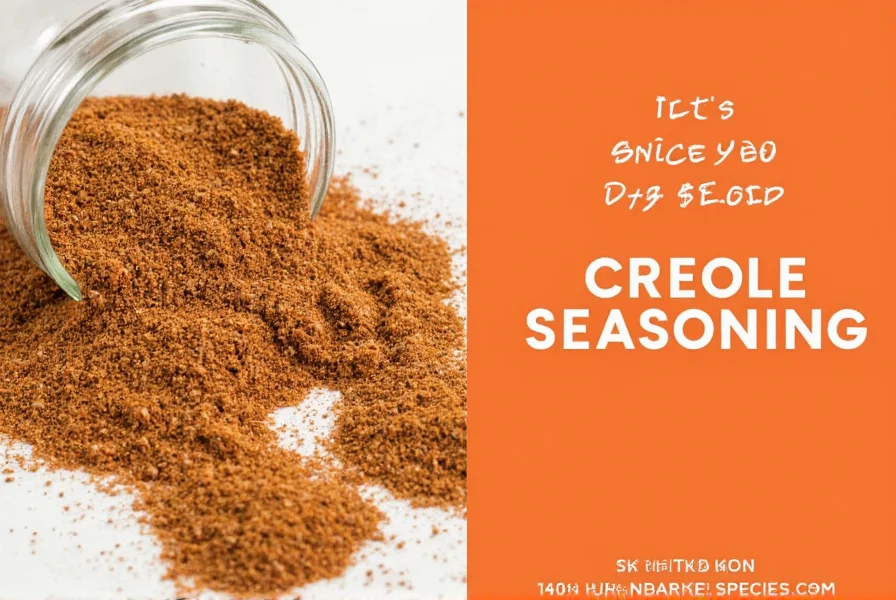
So while both are used in Louisiana cuisine, they're definitely not the same thing. Think of them like cousins who grew up in different neighborhoods but still share a family resemblance.
A Taste of History: Origins of Each Blend
Understanding where each seasoning comes from helps explain why they taste so different:
- Creole Seasoning: Rooted in New Orleans, Creole cuisine is a melting pot of French, Spanish, African, and Caribbean influences. Creole seasoning reflects this diversity — it's rich in herbs and aromatics that bring brightness and balance.
- Cajun Seasoning: Cajun cooking evolved from the rural Acadian settlers of Louisiana. With fewer resources, Cajuns relied on strong flavors, smoked spices, and hearty ingredients to create robust meals over open fires. This translates into a spicier, more rustic blend.

While both cuisines have influenced modern American food, they started from very different traditions — which shows in every pinch of spice.
Ingredient Breakdown: The Flavor Builders
Let's take a closer look at what makes each blend unique:
Creole Seasoning Ingredients
- Paprika – Adds color and mild sweetness
- Garlic powder – A staple for depth
- Oregano – Bright, Italian-inspired herb notes
- Thyme – Earthy and floral undertones
- Onion powder – Balances richness
- White pepper – Milder than black pepper
- Salt – Enhances overall flavor
Cajun Seasoning Ingredients
- Paprika – Still a base, but smokier versions may be used
- Cayenne pepper – Brings the heat
- Black pepper – Adds bite
- Garlic powder – For savory depth
- Onion powder – Builds umami
- Fennel or mustard seed – Occasionally added for complexity
- Salt – Essential for flavor layering
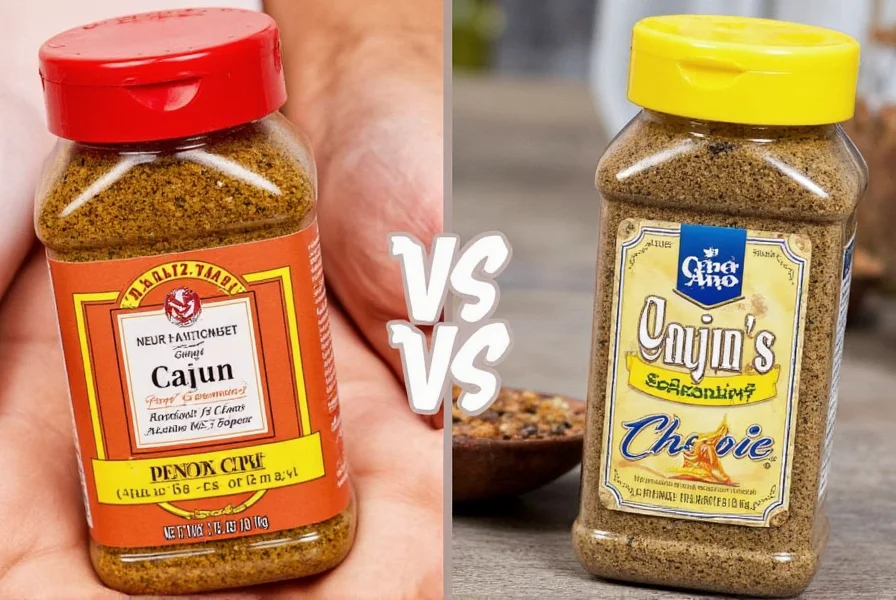
One way to remember: Creole leans on herbs; Cajun leans on heat.
When to Use Creole vs Cajun Seasoning
Choosing the right seasoning can elevate your dish from good to unforgettable. Here's a quick guide on when to use each:
Use Creole Seasoning When…
- You're making a tomato-based gumbo or stew
- Cooking seafood, especially shrimp or crawfish
- You want a milder, more complex flavor
- Your dish already has meat or protein and needs brightness
Use Cajun Seasoning When…
- Grilling or smoking meats like chicken, pork, or sausage
- Preparing jambalaya, étouffée, or dirty rice
- Adding a punch of heat to roasted vegetables or fries
- You're cooking outdoors or using fire as a flavor element
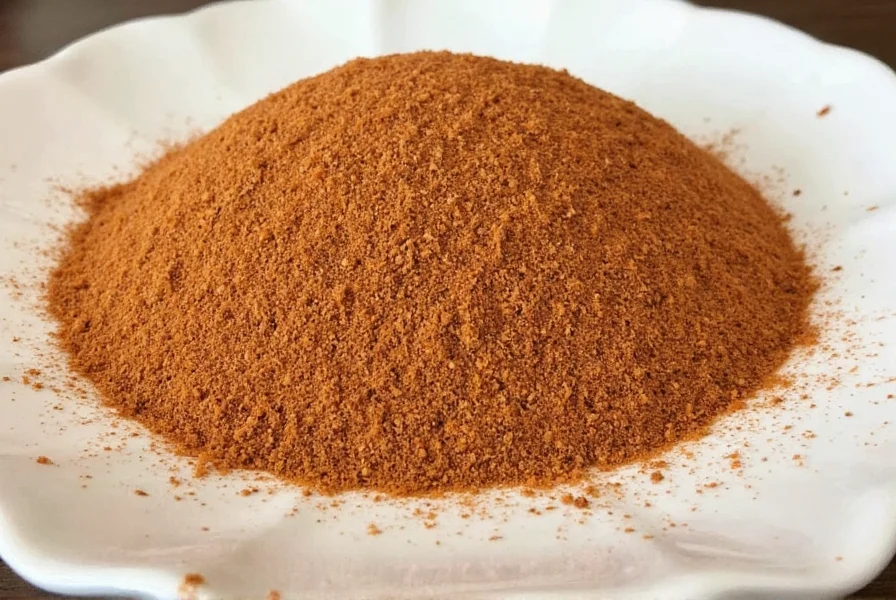
The "Swap It" Rule of Thumb
If you run out of one, can you substitute the other? Technically yes — but be aware of the flavor shift. If you swap Cajun for Creole, expect more heat and less herbal flair. If you go the other way around, your dish might lack the smoky kick you're aiming for.
DIY Magic: Make Your Own Blends at Home
Want full control over your spice game? Try making your own Creole and Cajun blends! It's easy, cost-effective, and lets you tweak the flavor to suit your palate.
Homemade Creole Seasoning Recipe
- 2 tbsp paprika
- 1 tbsp garlic powder
- 1 tbsp onion powder
- 1 tbsp dried oregano
- 1 tbsp dried thyme
- 1 tsp white pepper
- 1 tbsp salt (adjust to taste)
Homemade Cajun Seasoning Recipe
- 2 tbsp paprika
- 1 tbsp garlic powder
- 1 tbsp onion powder
- 1 tbsp cayenne pepper (adjust for heat level)
- 1 tbsp black pepper
- 1 tbsp salt
- Optional: ½ tsp fennel seeds or mustard seeds
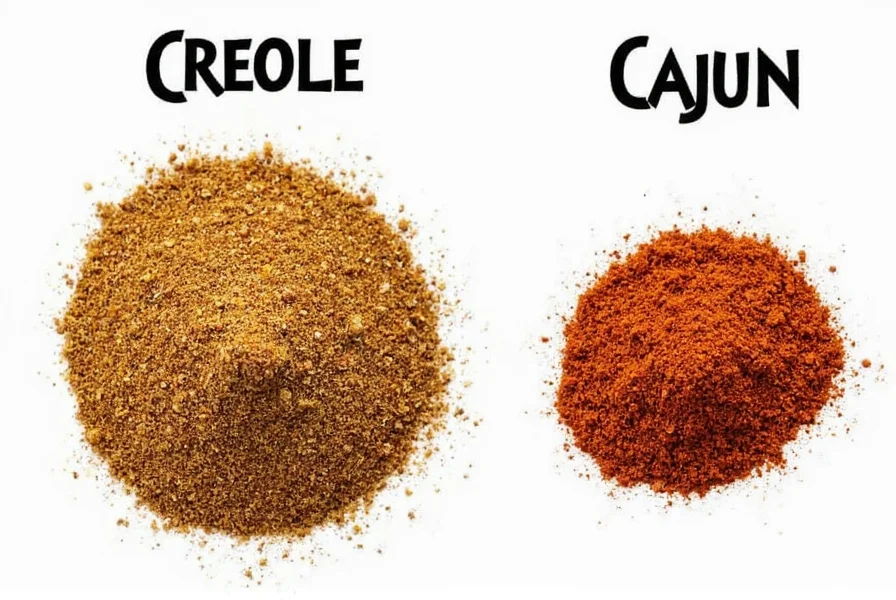
Store your blends in airtight containers away from direct sunlight for up to 6 months. Shake well before each use!
Buying Guide: What to Look For in Store-Bought Blends
Don't have time to DIY? No problem! There are some excellent store-bought options available. Here's how to pick the best one:
Top Picks for Creole Seasoning
- McCormick Creole Seasoning: Classic blend with balanced heat and herbs. Great for beginners.
- Tony Chachere's Original Creole Seasoning: Bold and authentic flavor. Popular among home cooks and chefs alike.
- Zatarain's Creole Seasoning: Perfect for seafood dishes. Slightly milder than others.
Top Picks for Cajun Seasoning
- Cajun Chef Blackened Seasoning: Smoky, intense, and perfect for grilled meats.
- B.F. Trappey's Hot Cajun Seasoning: For those who love serious heat without losing flavor.
- Slap Ya Mama Cajun Seasoning: Fan favorite with customizable heat levels (Original, Medium, Hot).
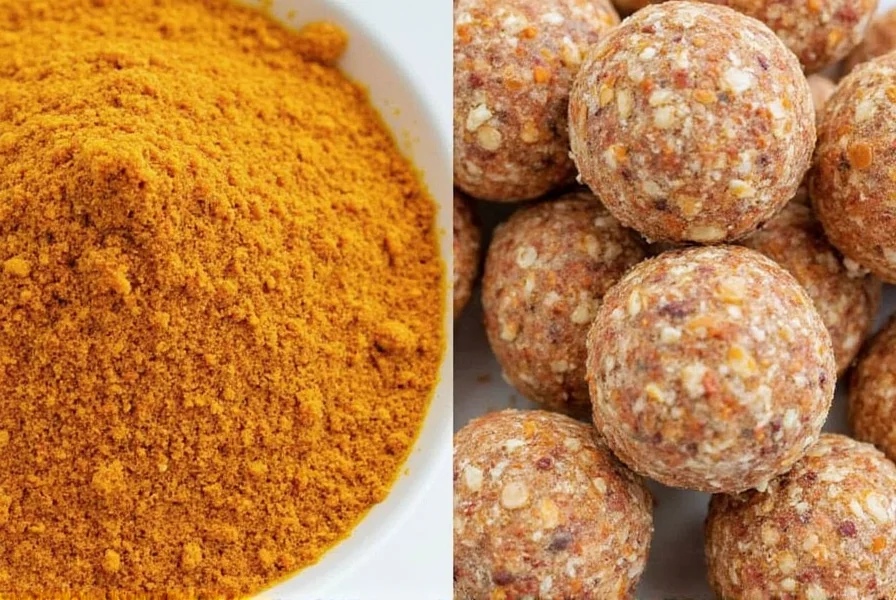
Things to Look For:
- No unnecessary fillers (like anti-caking agents or preservatives)
- Whole spices ground fresh, not old stock
- Clear labeling of ingredients
- Heat level indicators if buying Cajun
Best For:
- Weeknight Dinners: McCormick or Zatarain's for convenience
- Outdoor Cooking: Slap Ya Mama or Cajun Chef for bold flavor
- Seafood Lovers: Tony Chachere's for balanced seasoning
Frequently Asked Questions
Is Creole seasoning the same as Cajun seasoning?
No, they are not the same. While both are used in Louisiana cuisine and share some ingredients like paprika and garlic, Creole seasoning is typically more herb-forward with oregano and thyme, while Cajun seasoning focuses on heat with more cayenne and black pepper. Creole has New Orleans roots with French, Spanish, and Caribbean influences, while Cajun comes from rural Acadian settlers.
Can I substitute Creole seasoning for Cajun seasoning (or vice versa)?
You can substitute one for the other in a pinch, but expect flavor differences. Swapping Cajun for Creole will add more heat and smokiness while losing herbal notes. Swapping Creole for Cajun will result in a milder, more herbaceous flavor with less kick. For best results, adjust other ingredients to compensate for the flavor profile change.
Which is hotter - Creole or Cajun seasoning?
Cajun seasoning is typically hotter than Creole seasoning. Cajun blends emphasize cayenne pepper and black pepper for a medium to hot heat level, while Creole seasoning usually has a milder heat profile (mild to medium) with more focus on herbs like oregano and thyme.
What's the main difference in ingredients between Creole and Cajun seasoning?
The key difference is that Creole seasoning contains more herbs (especially oregano and thyme) and sometimes white pepper, giving it a brighter, more complex flavor. Cajun seasoning focuses on heat with higher amounts of cayenne and black pepper, often with a smokier profile. Both contain paprika, garlic, and onion, but the supporting ingredients create distinct flavor experiences.
What dishes should I use Creole seasoning for?
Creole seasoning works best in tomato-based dishes like gumbos and stews, seafood preparations (especially shrimp and crawfish boils), and any dish where you want a more complex, herb-forward flavor without overwhelming heat. It's particularly well-suited for New Orleans-style dishes.
What dishes should I use Cajun seasoning for?
Cajun seasoning shines in grilled or smoked meats (chicken, pork, sausage), rice dishes like jambalaya and dirty rice, étouffée, and any recipe where you want a bold, smoky kick. It's perfect for outdoor cooking and dishes that benefit from higher heat levels.
Final Thoughts: Which One Should You Reach For?
In short: if you want something vibrant, aromatic, and herb-forward — go with Creole. If you're after bold, smoky, and fiery flavor — reach for Cajun.
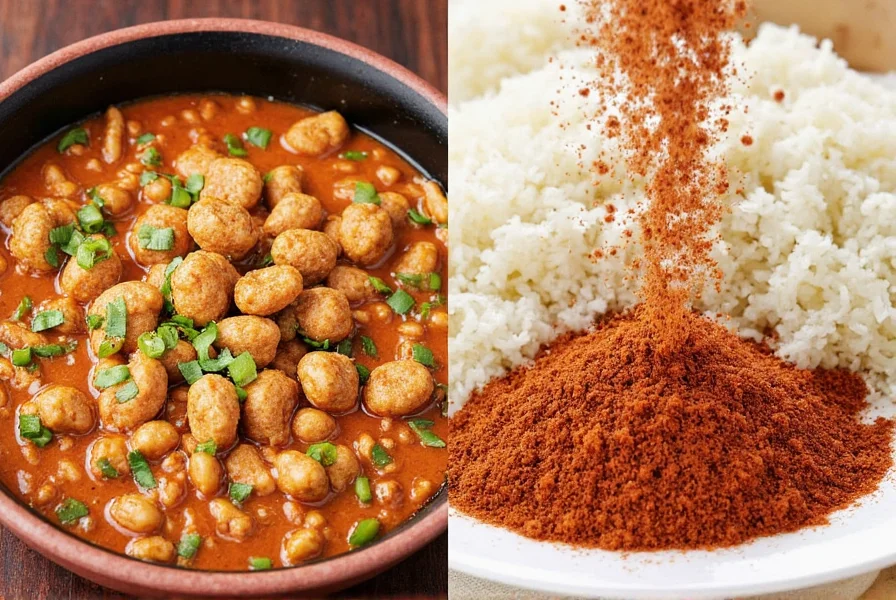
Think of them like musical genres: Creole is jazz (smooth, complex, layered), and Cajun is rock 'n' roll (raw, loud, and full of soul). Neither is better — just different vibes depending on your mood and menu.
Now go forth, season boldly, and never confuse Creole and Cajun again!

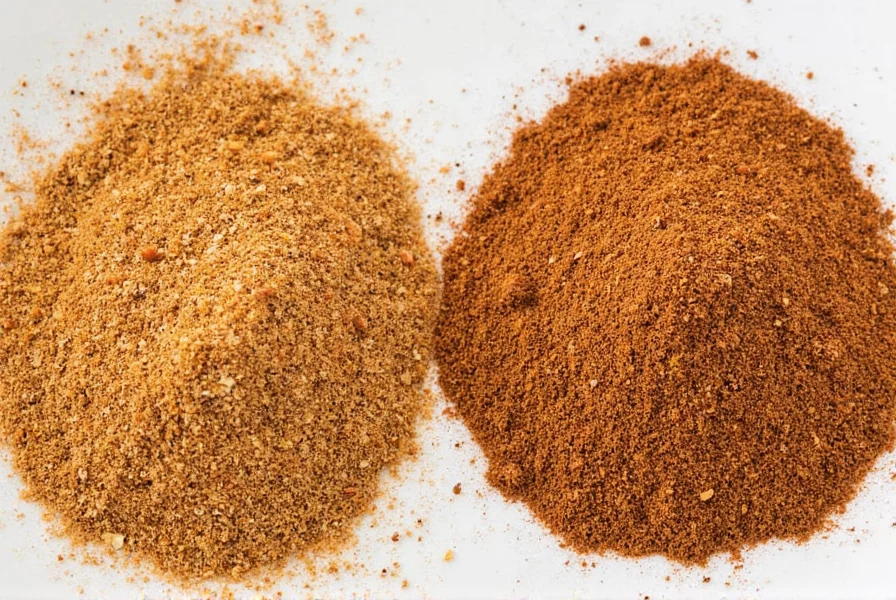









 浙公网安备
33010002000092号
浙公网安备
33010002000092号 浙B2-20120091-4
浙B2-20120091-4